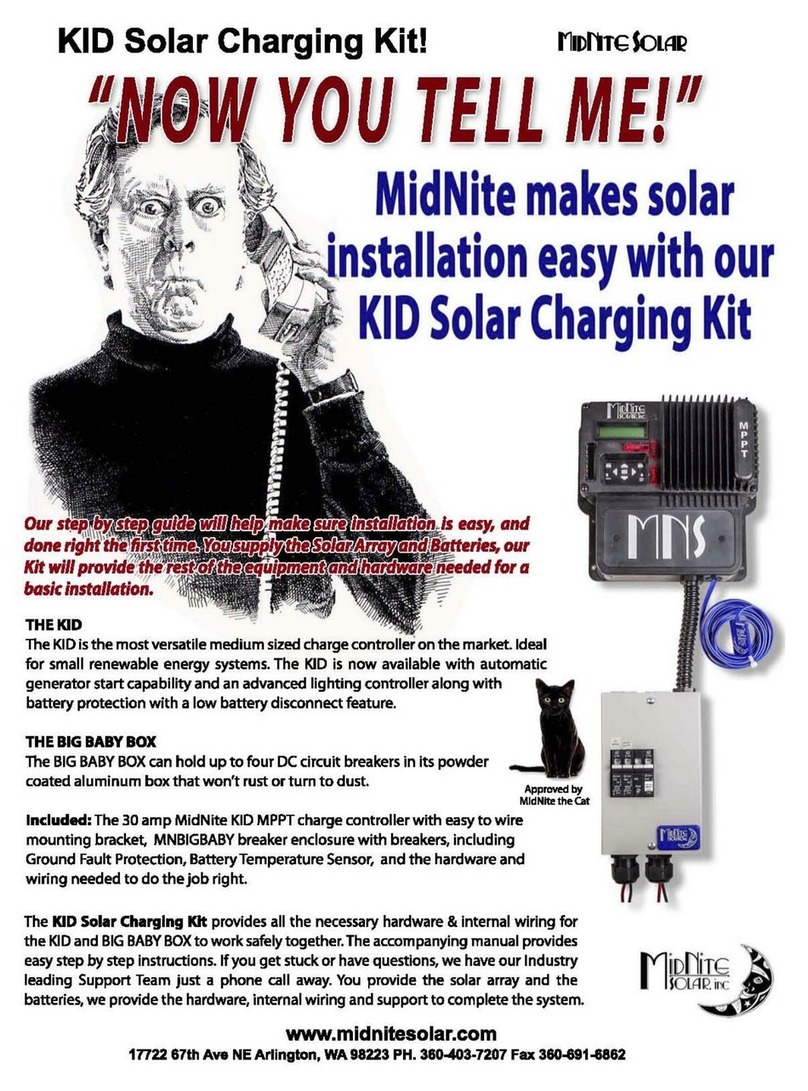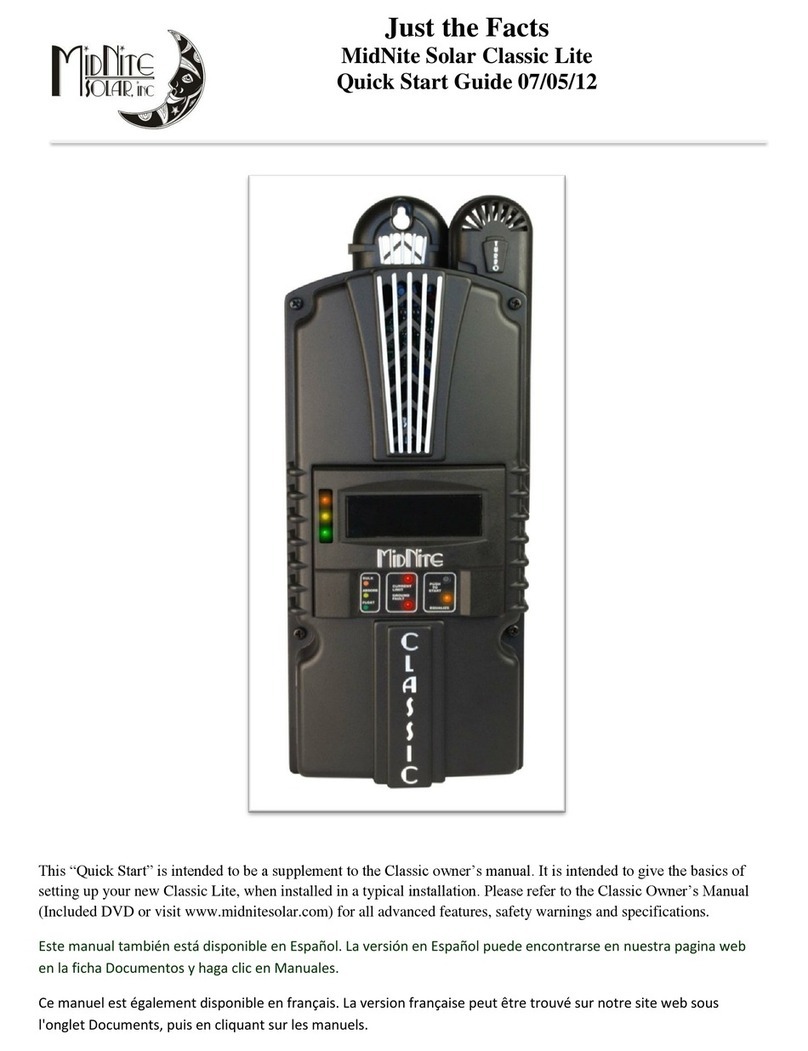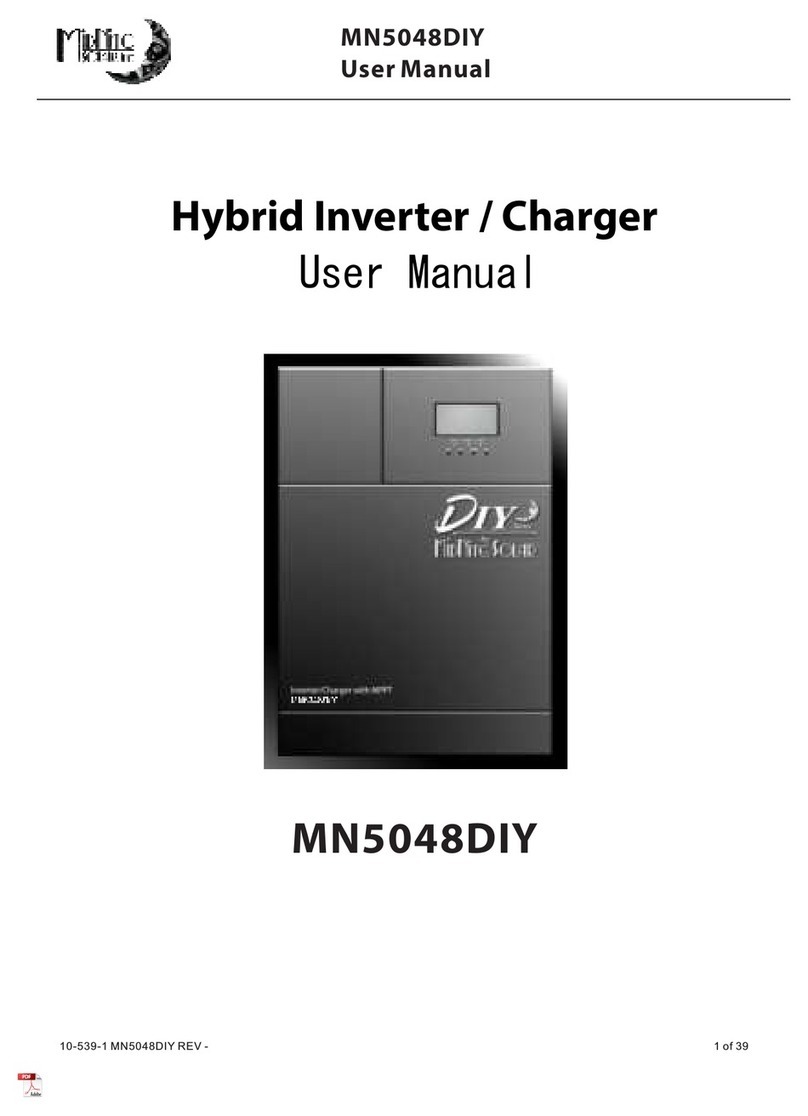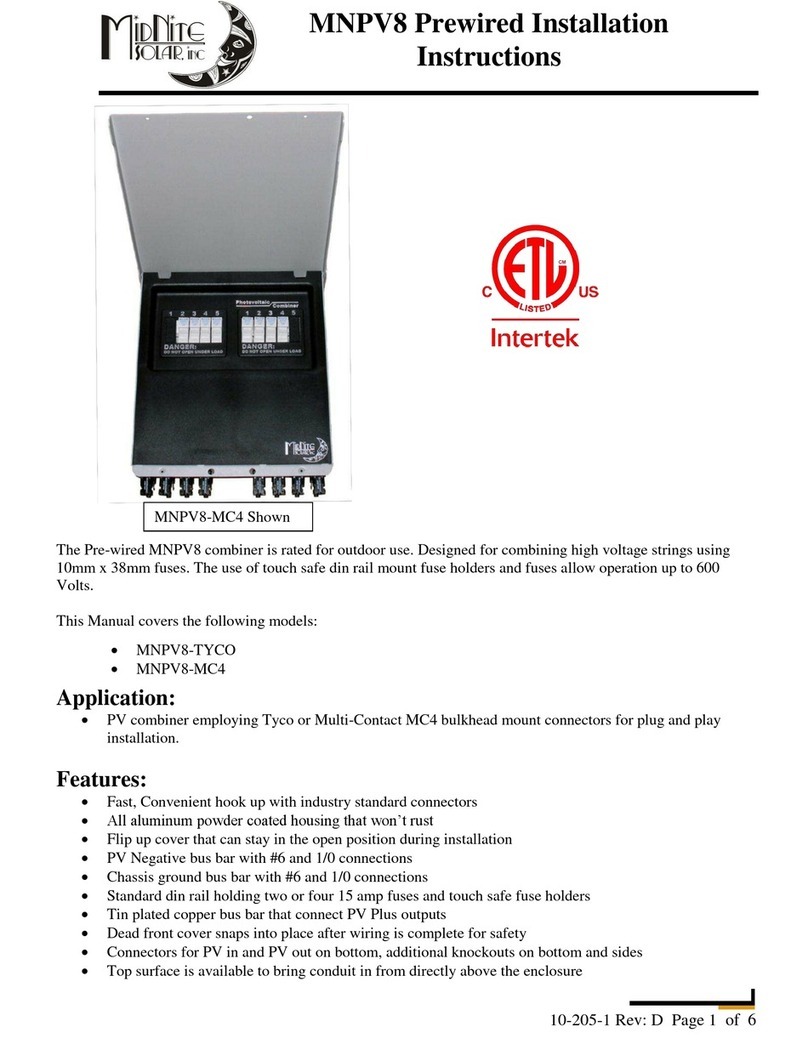MNROSIE7048 MANUAL
7| P a g e 1 0 - 4 32- 1 R E V : -
water and soap nearby and thoroughly wash in case battery acid contacts skin, clothing, or
eyes. In the event of exposure to the eyes, flood them for at least 15 minutes with running
water and seek immediate medical attention. Baking soda neutralizes lead acid battery
electrolyte and vinegar neutralizes spilled NiCad and NiFe battery electrolyte; depending on
your battery type, keep a supply on hand near the batteries.
•Read and follow the battery manufacturer’s safety precautions before installing the inverter
and batteries. Always verify proper polarity and voltage before connecting the batteries
to the inverter. Once the batteries are connected to the inverter, ensure the maintenance
and charging requirements (i.e., charge voltage and charge rate) provided by the battery
manufacturer are followed to extend the life of the batteries and to prevent damage to the
batteries while charging.
•The battery bank should be installed in a clean, dry, ventilated environment that is protected
from high and low temperatures. If installed in a vehicle/boat, the batteries must be mounted
upright (if using liquid batteries) and securely fastened. The location must be fully accessible
and protected from exposure to heat producing devices, and away from any fuel tanks.
•Batteries can produce explosive gasses, so install batteries in a well-ventilated area. For
compartment or enclosure installations, always vent batteries from the highest point to the
outside. Design the battery enclosure to prevent accumulation and concentration of
hydrogen gas in pockets at the top of the compartment.
•Remove all jewelry such as rings, watches, bracelets, etc., when installing or performing
maintenance on the batteries and inverter. A battery can produce a short-circuit current high
enough to weld metal jewelry, causing severe burns.
•Use insulated tools and be very careful when working around batteries, they can produce
extremely high currents if short-circuited (e.g., dropping a metal tool across the battery
terminal), which could cause a fire or explosion.
•When replacing some of the batteries in a bank, always replace with the same model, size, Ah
capacity, charging voltages, and type of the old batteries. Types include: (Flooded, Lithium,
NiFe, sealed, etc.).
•The Rosie will operate with any battery type/form factor (L-16, 2V, golf cart, rectangular, etc.)
or chemistry (lead-acid, Lithium, Nickel Iron, etc.), comprised in a 48VDC nominal bank.
•To prevent a spark at the battery and to reduce the chance of explosion, always connect the
cables to the batteries first. Then connect the cables to the inverter.
•Never work alone. Always have someone within the range of your voice or close enough to
come to your aid when working around batteries.
•Never use old or untested batteries. Check each battery’s label for age, type, and date code
to ensure all batteries are identical.
•Proper disposal of batteries is required. Refer to your local codes for disposal requirements.
•Batteries are sensitive to changes in temperature. Install batteries in a stable environment.

































